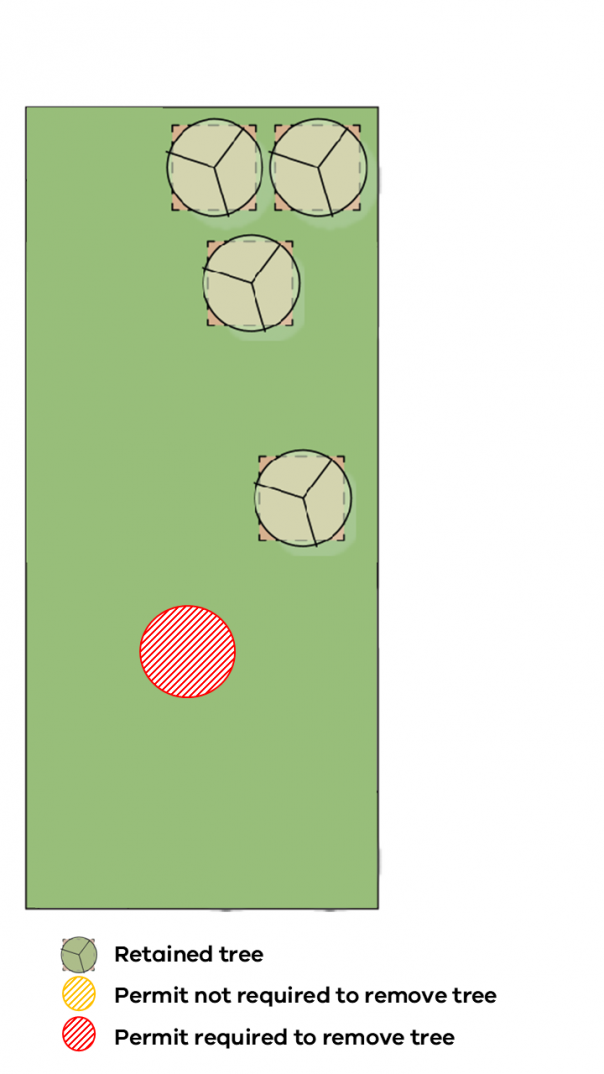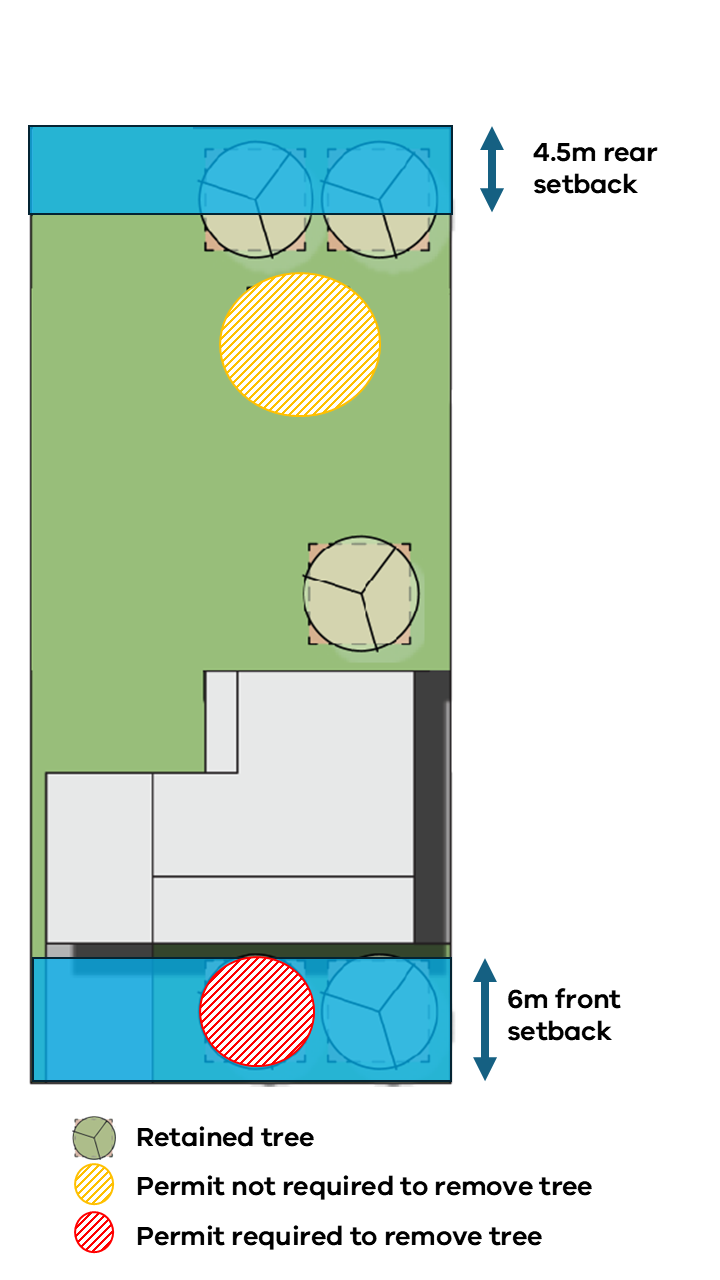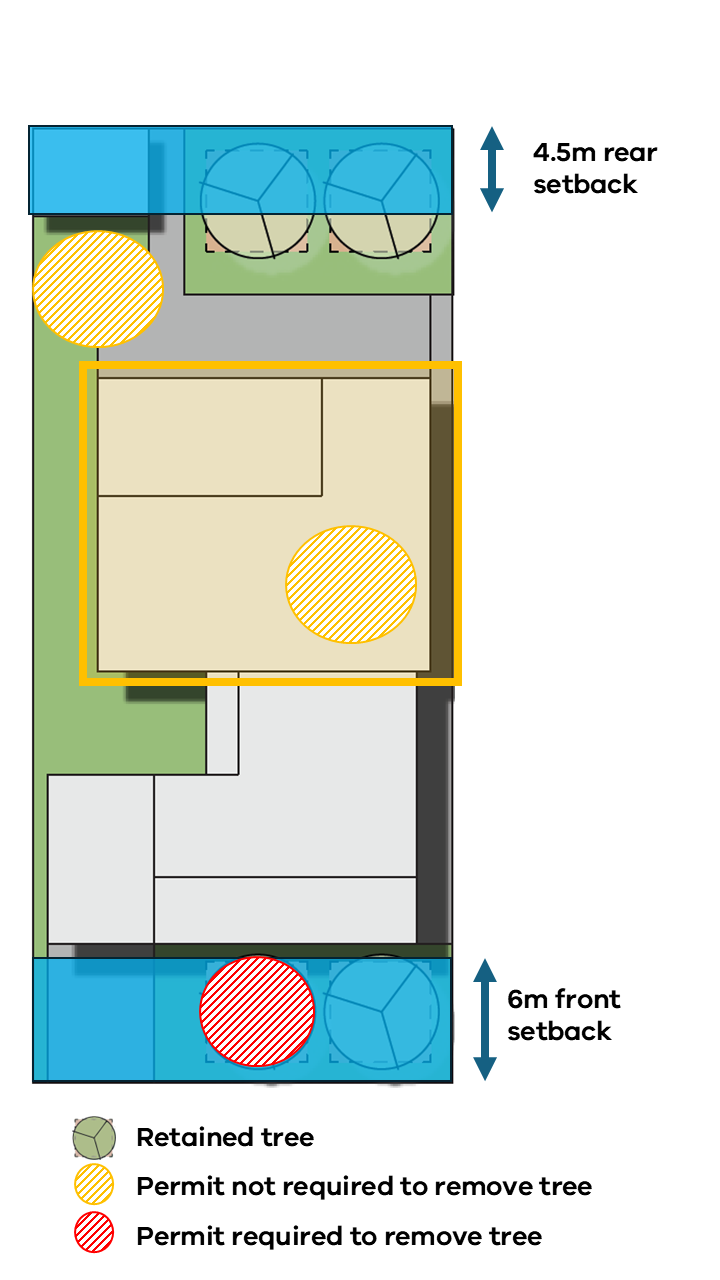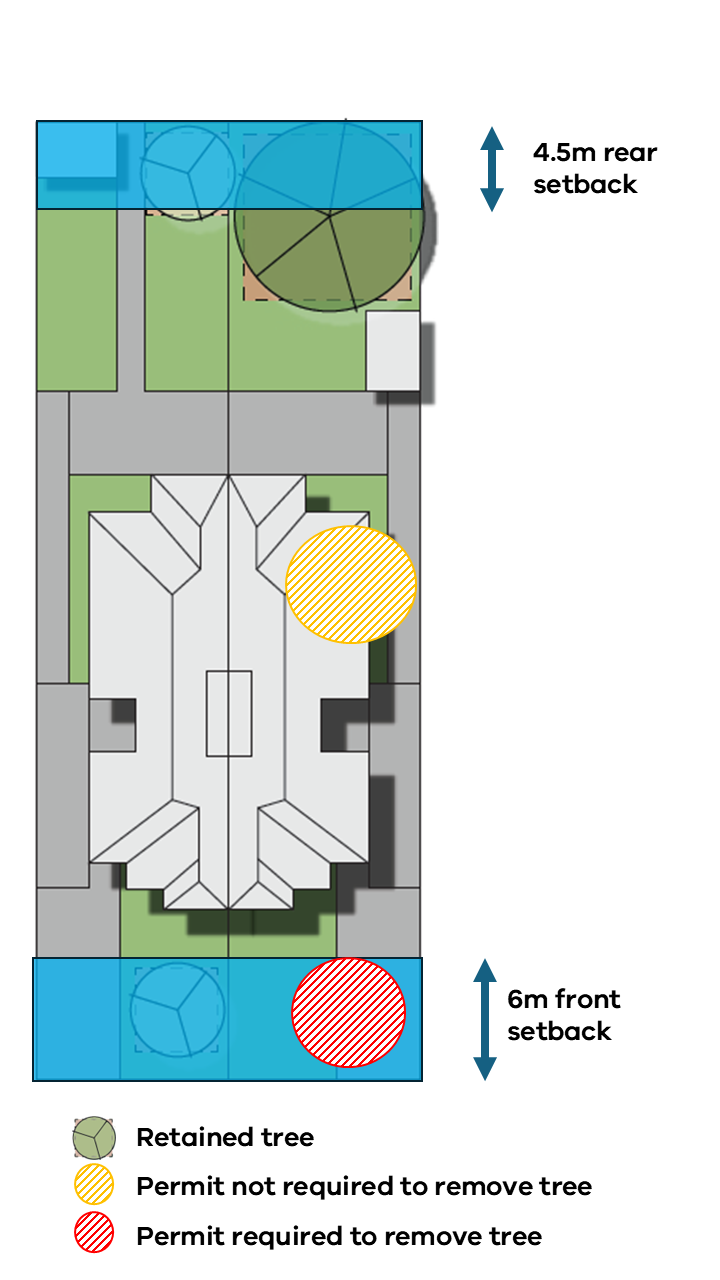Status
On this page:
Introduction of Clause 52.37 Canopy trees
On 15 September 2025, Amendment VC289 introduced clause 52.37 (Canopy trees) to all planning schemes. The clause requires a planning permit to remove, destroy or lop a canopy tree in specific circumstances. The requirement applies to all residential zones (except for the Low Density Residential Zone).
The new clause supports Action 12 of Plan for Victoria and state planning policies which seek to protect and enhance canopy tree cover in urban areas to reduce the impacts of urban heat on human health and wellbeing.
The rules to protect and enhance canopy trees on residential land are designed to balance canopy tree protection and minimise impacts on housing yield, recognising government policy including Victoria’s Housing Statement.
Clause 52.37 does not change or duplicate the deemed-to-comply standards for canopy trees under residential provisions such as clause 55 Townhouse and Low-Rise Code. The responsible authority is required to make a proportionate and fair decision under clause 52.37 by balancing the retention of existing canopy trees and residential development.
What is a canopy tree?
Clause 52.37 requires a permit to remove, destroy or lop a canopy tree. A canopy tree means a tree that has:
- a height of more than 5 metres above ground level; and
- a trunk circumference of more than 0.5 metres, measured at 1.4 metres above ground level; and
- a canopy diameter of at least 4 metres.
Permit required to remove, destroy or lop a canopy tree in residential zones
A permit is only required in the Mixed Use Zone, Township Zone, Residential Growth Zone, General Residential Zone, Neighbourhood Residential Zone, and Housing Choice and Transport Zone in specific circumstances.
A permit is required to remove, destroy or lop a canopy tree anywhere on the lot where:
- The land is vacant.
- The land is vacant and a new single dwelling is proposed (and only a building permit is required)

- Vacant lot

- Vacant lot and only a building permit is required
A permit is required to remove, destroy or lop a canopy tree within 6 metres of the narrowest street frontage and 4.5 metres of the rear boundary where:
- The land contains an existing dwelling where no development is proposed.
- The land contains an existing dwelling and is proposed to be extended.
- The land is vacant and a planning permit application is being assessed for one or more dwellings.
- The land contains an existing dwelling(s) and a planning permit application is being assessed for a one or more dwellings.

- Existing dwelling

- Existing dwelling and proposed extension

- Vacant lot where a dwelling is being assessed under a planning permit application

- Existing dwelling where one or more dwellings are being assessed under a planning permit application

- Vacant lot where two or more dwellings are being assessed under a planning permit application
The assessment of a permit is a fast-tracked process
Some applications will be eligible for a VicSmart assessment process which should be decided in 10 business days.
Where an application is not eligible for the VicSmart assessment process, notice of the application is not required and council’s decision cannot be reviewed by the Victorian Civil and Administrative Tribunal.
An applicant for a permit may apply to the Tribunal for review of a decision by a responsible authority to refuse to grant the permit.
Information to be provided with the application
An application will be required to provide information to the responsible authority as specified in clause 52.37.
Assessment of the removal, destruction or lopping of a canopy tree
The responsible authority is required to balance the merits of the proposal, the impact on canopy cover and how any proposed development supports housing targets.
Whether it is appropriate for a tree to be removed from the land will be determined on the merits of the proposal based on the information provided in the application.
The responsible authority’s decision will be guided by the purpose of the provision and matters outlined in the decision guidelines of clause 52.37.
This decision guidelines do not extend to the broader decision requirements in Clause 65 of the planning scheme and section 60 of the Planning and Environment Act 1987. The responsible authority must only consider the decision guidelines contained in clause 52.37 and cannot consider other matters such as state policies, Municipal Planning Strategy and local planning policies.
Replacement canopy tree requirements to enhance canopy trees
For many applications there will be a requirement to plant replacement canopy trees to protect or enhance canopy tree cover.
Clause 52.37-3 sets a minimum canopy cover requirement of approximately 10 per cent on land up to 1,000 square metres and 20 per cent on land greater than 1,000 square metres. This will mean that for many applications there will be requirements to enhance canopy cover.
For example, for a site area of 700 square metres the canopy tree requirement is four. The canopy tree requirement may be met by retaining existing canopy trees, by planting new canopy trees, or a combination of both.
A replacement canopy tree (new canopy tree) to be planted, must be a species and type that will, at maturity, have:
- an expected height of at least 6 metres above ground level; and
- an expected canopy diameter of at least 4 metres.
Note the new canopy tree expected height and diameter is a minimum. A council can consider new canopy trees that are larger and may consider a reduced number of required trees.
Other planning rules will still apply
Clause 52.37 does not override or limit the operation of other relevant planning provisions such as overlays and the bushfire requirements. Land may be affected by other overlays including vegetation protection or environmental significance overlays.
Local laws and clause 52.37
A number of councils regulate vegetation removal including canopy trees via local law permits. Clause 52.37 may override a local law regarding tree removal only when it duplicates the considerations of the local law. The local law may continue to operate for any matters that are beyond the scope of clause 52.37.
Page last updated: 15/09/25





